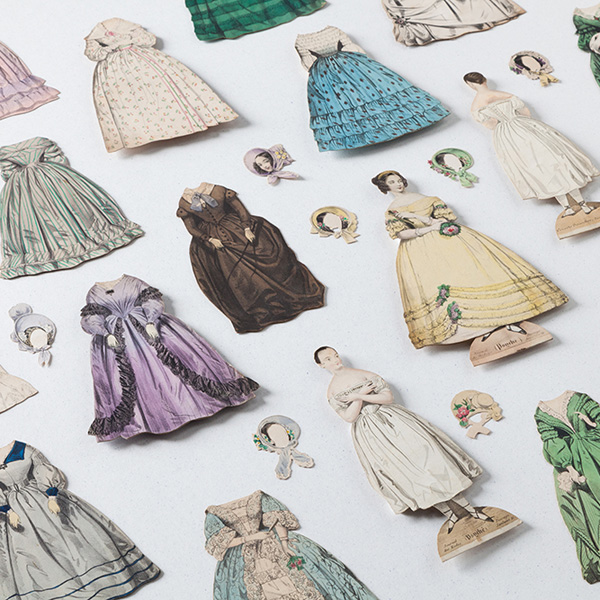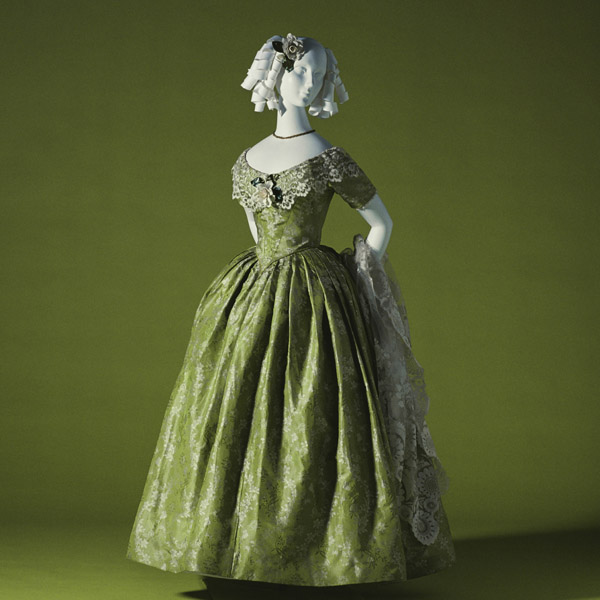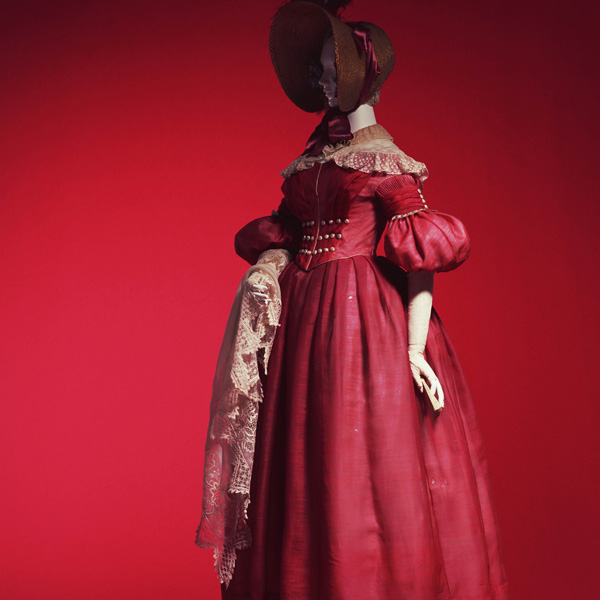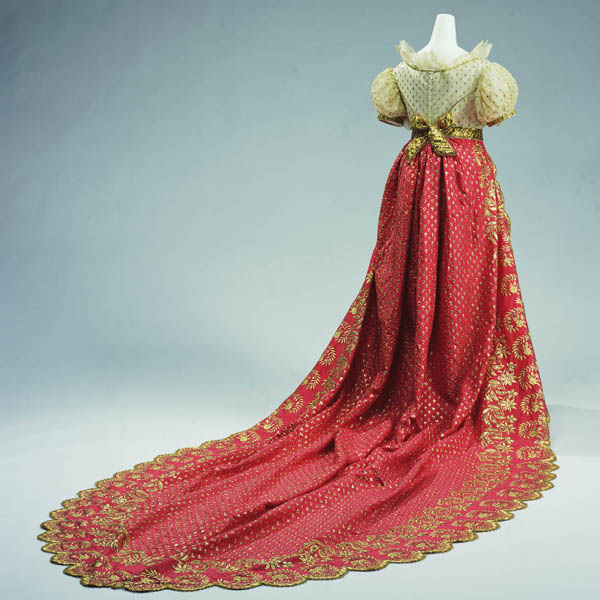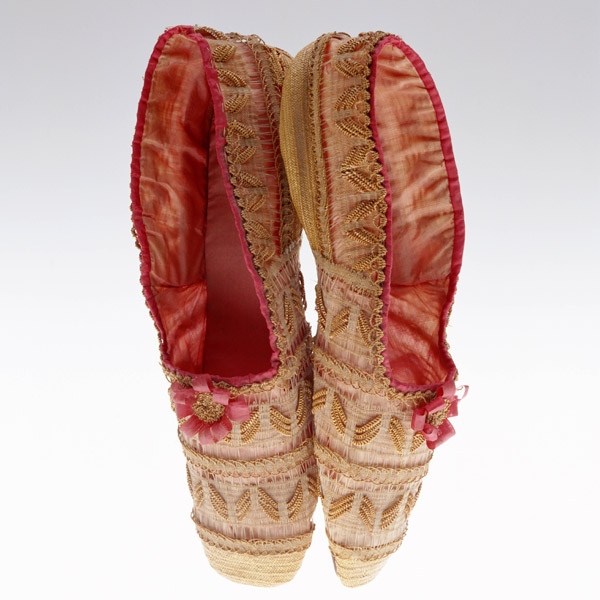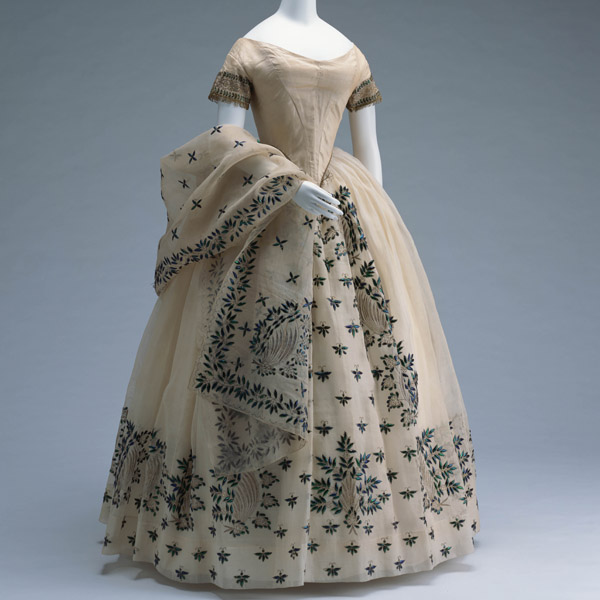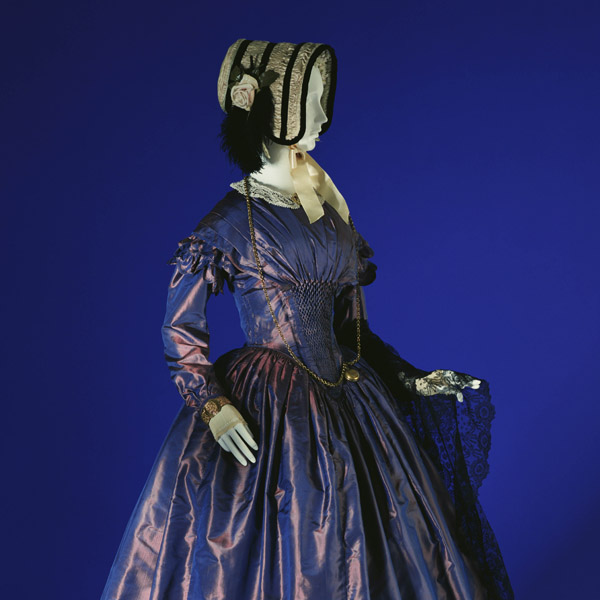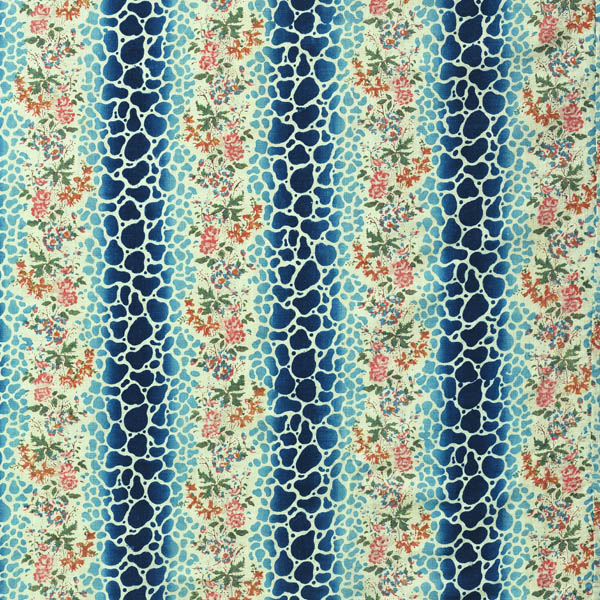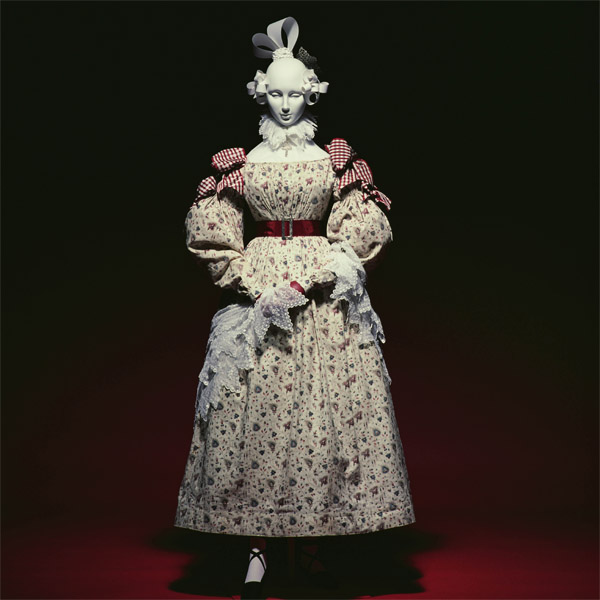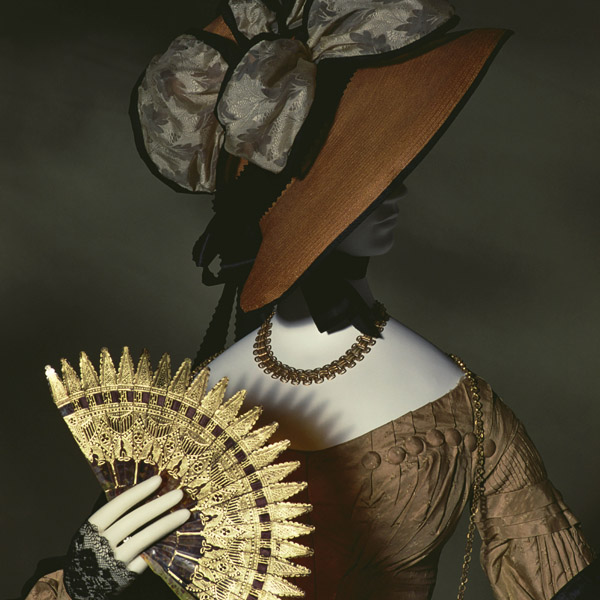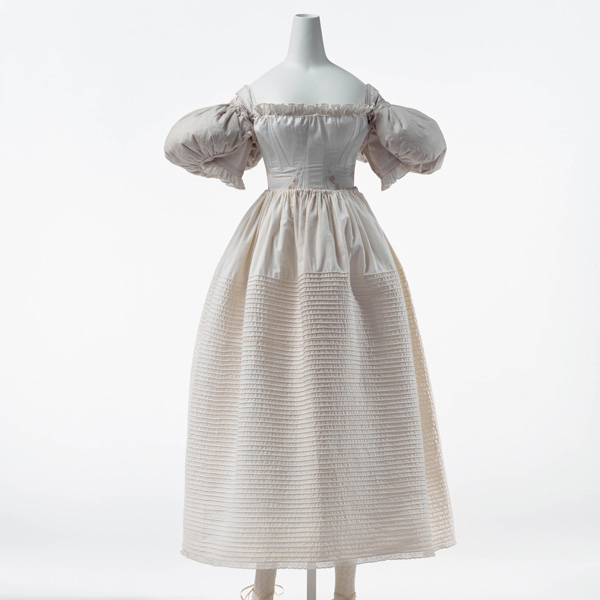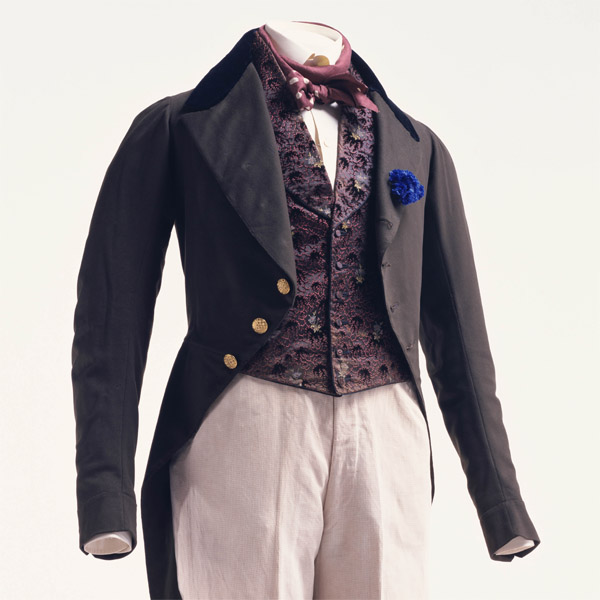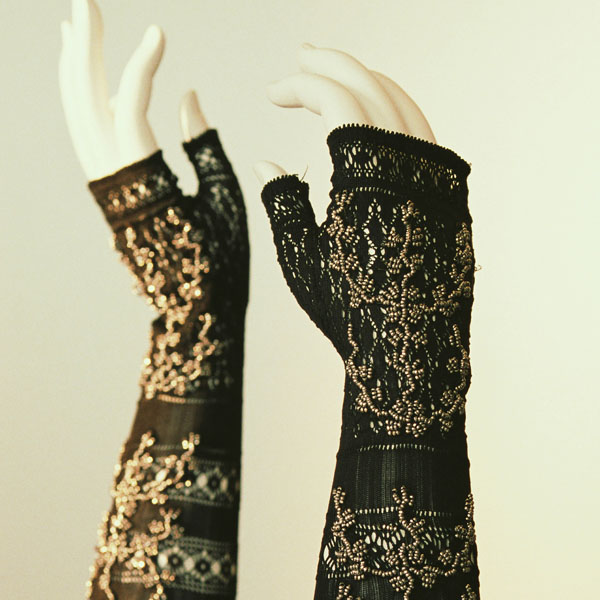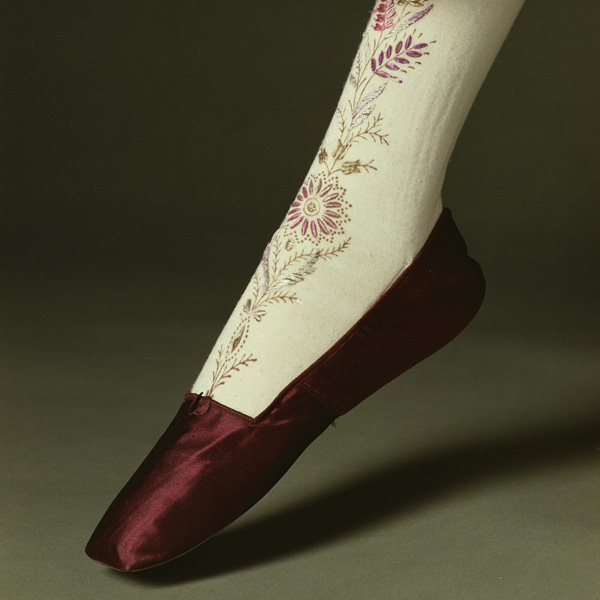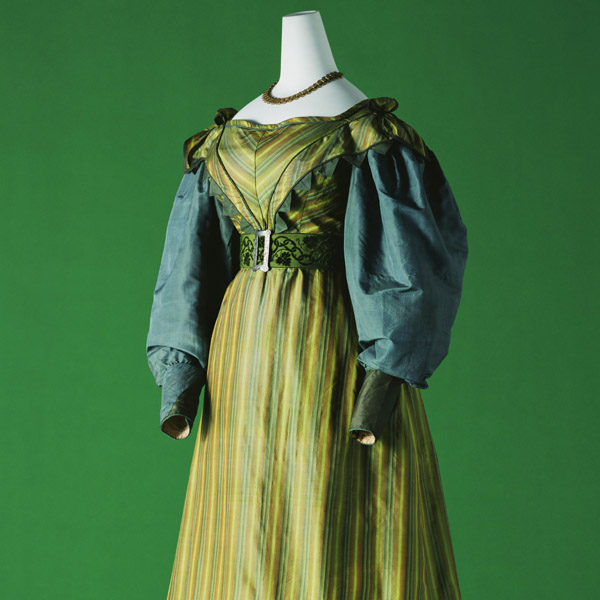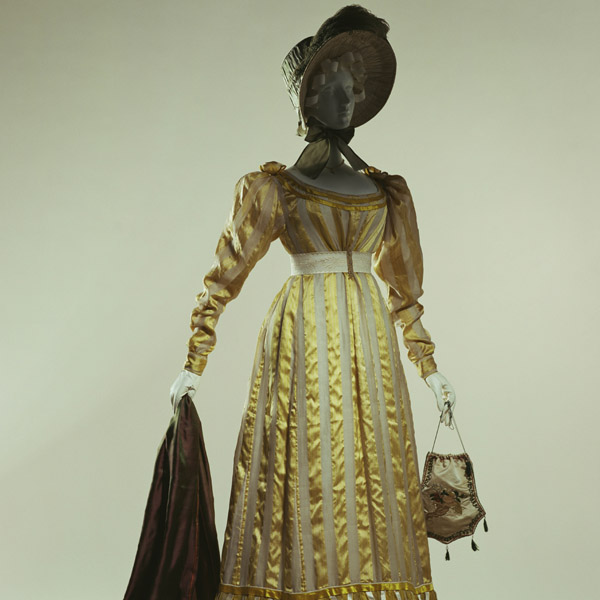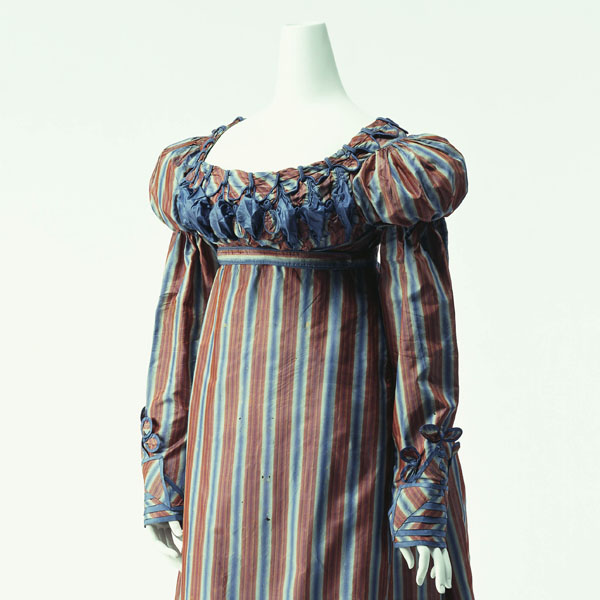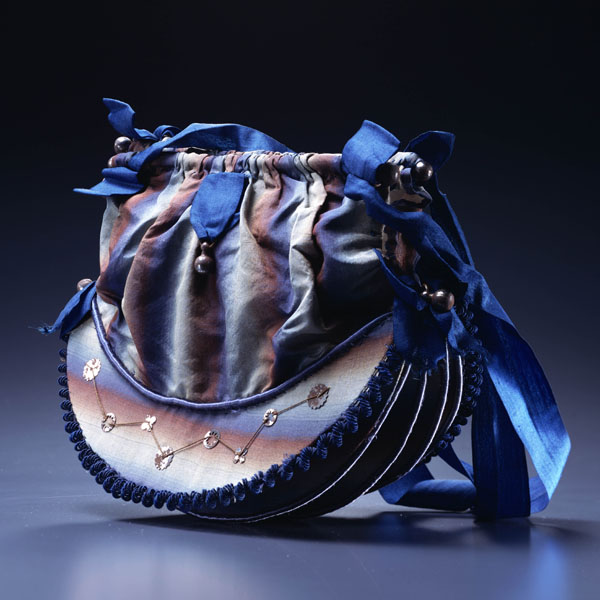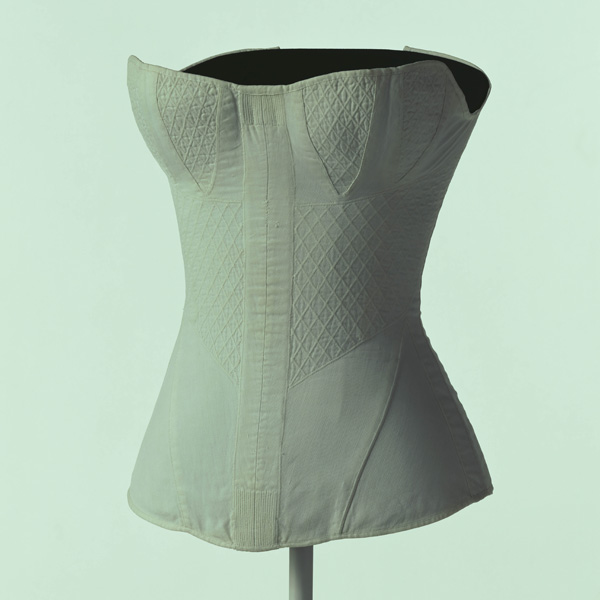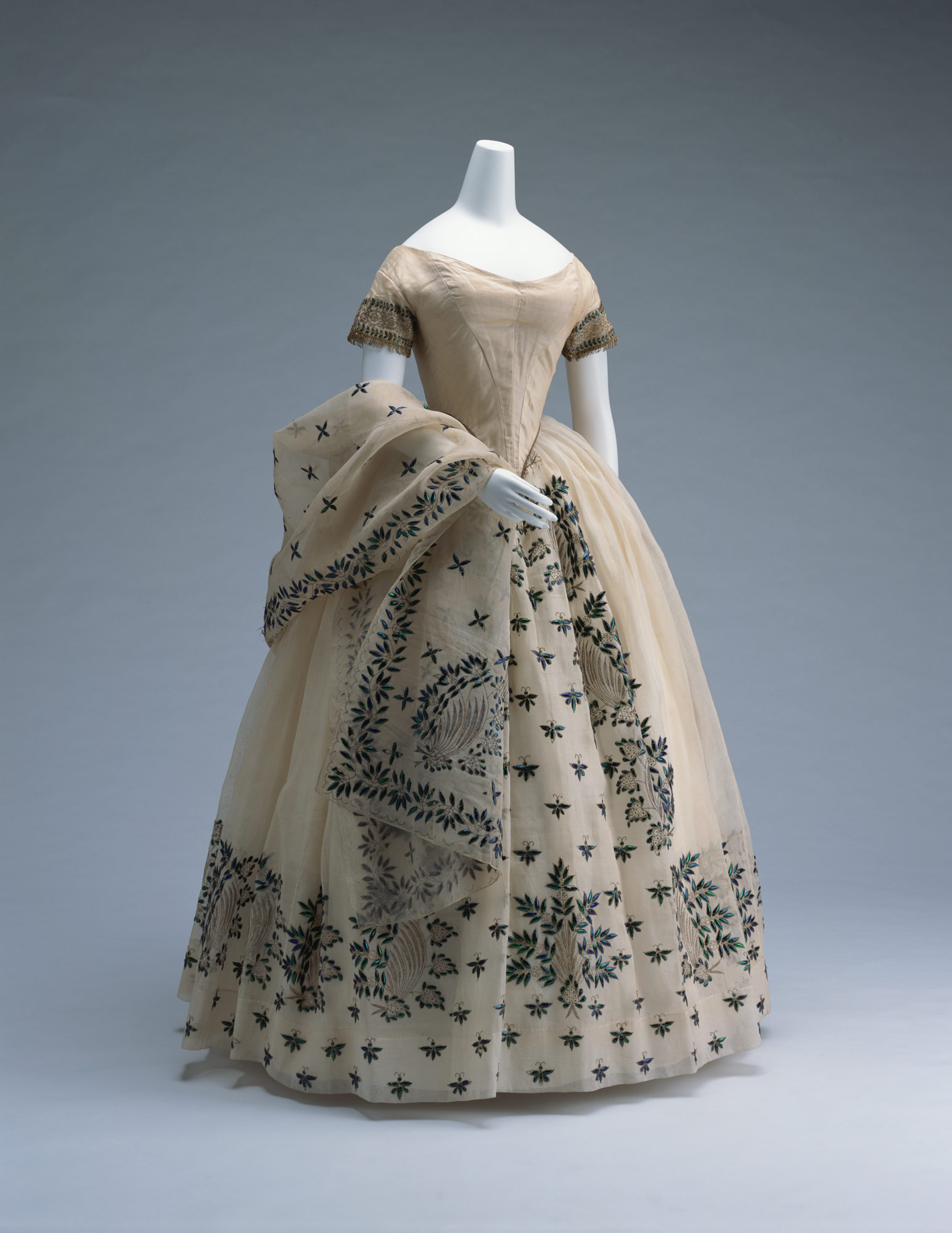
© The Kyoto Costume Institute, photo by Takashi Hatakeyama
You can enlarge by putting the mouse cursor on the image.
Evening Dress
c. 1850 - India?
- Material
- White mull; mull on silk satin for bodice; floral motif embroidered with jewel beetle elytra and gold thread; matching shawl.
- Inventory Number(s)
- AC10375 2000-40-2AB
This elegant dress is made of mull with applications of jewel beetle elytra. 1942 of these glistering forewings, with its color oscillating from green to purple, can be found on the dress, 1548 on the shawl.
India was colonized by the British Empire during the mid-18th century, and from the latter half of the 19th century onwards a vast variety of products using jewel beetle embroidery was being exported to the western European markets.
Beautiful and splendid decoration design with jewel beetle elytra originated during the time of the Mughal Empire that dominated most of the Indian subcontinent from the 16th to the mid-19th century. Examples of luxurious turbans with gold thread embroidery and wedding gowns from the Maharajas with jewel beetle applications are preserved in the National Museum, New Delhi, as well as in the Jai Singh II. City Palace Museum in Jaipur. Furthermore, there has been a tradition in India of applying jewel beetle elytra as an adornment to jewelry and paintings alike. This technique is thought to have derived from embroidery.
 Digital Archives
Digital Archives